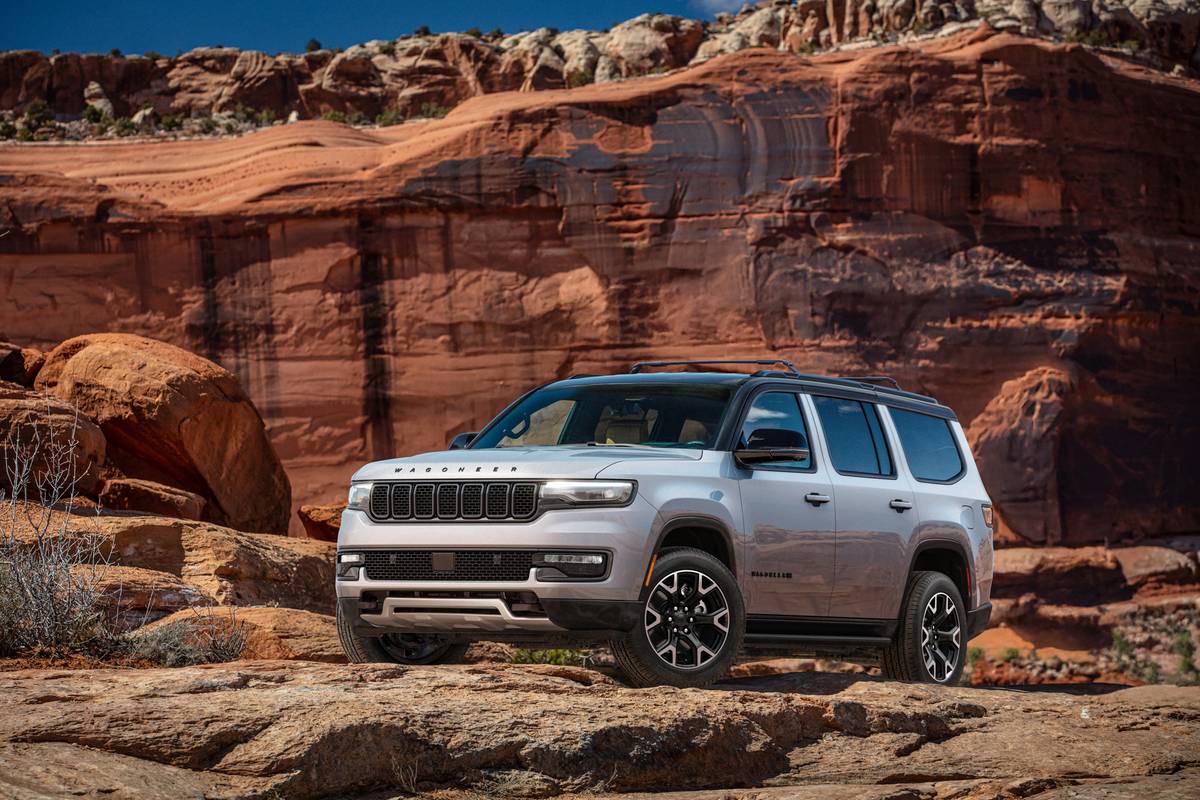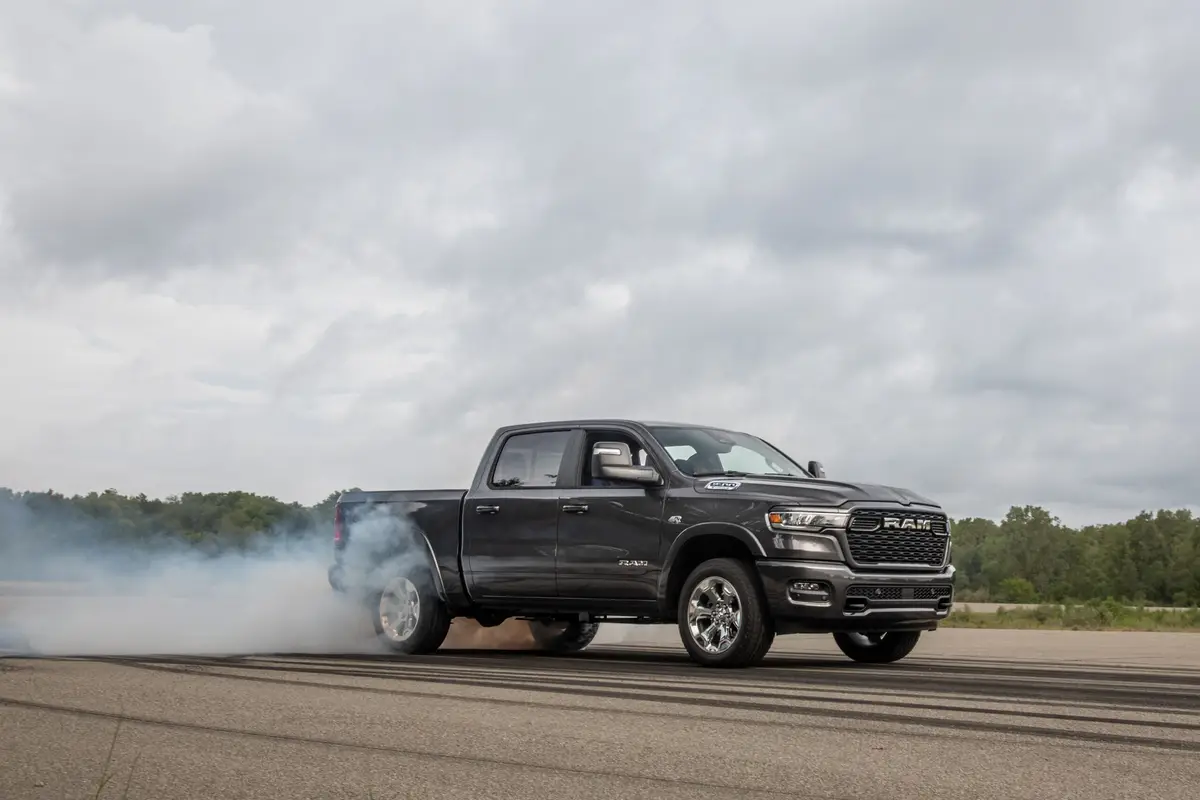Star-Telegram.com's view
This just might be the ultimate off-road pickup.
For 2009, the truck version of the smaller Hummer sport utility vehicle has arrived, dubbed the H3T.
Built on the chassis of the midsize General Motors pickups – the Chevrolet Colorado and GMC Canyon – the H3T essentially is just the H3 with the cargo area’s top chopped off to create a small pickup bed, great for hauling your sports equipment, camping gear or other “stuff” into the wilderness.
Following the theme of vehicles such as the Ford Explorer Sport Trac and Chevrolet Honda Ridgeline, but with the off-road prowess of a Hummer, the H3T seats five people quite comfortably, even adults.
It makes both a great highway cruiser and off-road explorer, which is a hard combination to achieve.
There are two engines offered in the H3T, either the 3.7-liter five-cylinder borrowed from the Colorado and Canyon, or a 5.3-liter V-8, the same engine used in a variety of GM pickups and SUVs.
GM markets all of the Hummer vehicles through an agreement with Hummer parent AM General Corp., but does have plans to sell the brand as part of its corporate restructuring. Under whose ownership it will eventually fall is unknown now, but the brand is expected to live on. While Hummer has come under criticism for its generally poor fuel economy, these vehicles are unmatched by any competitor, and do have a place in a niche market whose buyers want the great off-road experience that a Hummer offers – along with the on-road manners and amenities of a luxury vehicle.
AM General builds the larger Hummer H2 at its plant in Indiana, where it also makes the military Humvee, on whose design the first civilian Hummer was based. But GM makes the H3 and H3T at its midsize-pickup plant in Shreveport, La.
The H3 model was introduced two years ago, and is smaller and significantly less expensive than the H2. It’s also somewhat more fuel-efficient than the H2, which shares its architecture with the Chevrolet Tahoe/GMC Yukon full-size SUVs.
On the H3 and H3T, the base five-cylinder engine is EPA rated at 14 miles per gallon city/18 highway. No ratings are given for the H2, because it is heavy enough to be exempt from EPA mileage reporting rules, but it’s generally considered to have overall fuel economy of about 10 mpg. There also is a pickup version of the H2, called the H2T.
Our test vehicle was the H3T Alpha model (base price $36,015 plus $745 freight), which comes with the 5.3-liter V-8 and EPA ratings of 13 city/16 highway. The entry-level H3T, though, starts at $30,750 (plus freight) and has the five-cylinder engine.
Originally, the H3 came only with the five-cylinder, which produces 239 horsepower and 241 foot-pounds of torque. GM added the 5.3-liter V-8 as an option for 2008, calling that model the H3 Alpha, and that designation carries over to the H3T model with the same V-8.
The V-8 is rated at 300 horsepower and 320 foot-pounds of torque. It has EPA ratings of 13 city/16 highway. It’s hard to gauge whether consumers will choose more of the five-cylinder or V-8 models, though, even with the threat of higher gasoline prices looming. I suspect that many who buy the H3T will want the extra power, and won’t be concerned about the V-8’s slightly poorer fuel economy.
Yet there are strong arguments for the five-cylinder model, with price being a big consideration along with its better mileage. Recent TV ads for the H3 touted its relatively decent fuel economy compared with larger, bulkier SUVs with V-8 engines. For its size and capabilities, include its extreme off-road agility, the H3 is among the best of the rugged sport utility class on fuel economy – with ratings similar to those of the Jeep Wrangler, which comes with a V-6 engine that isn’t as powerful as the H3T’s five-cylinder – it has just 202 horsepower.
Both H3T models come with a four-speed automatic transmission.
The H3T is designed to appeal to the same consumers who would choose a similar vehicle such as the Chevrolet Avalanche or Explorer Sport Trac equipped with four-wheel drive. It will also appeal to some who might otherwise buy the Toyota Tacoma crew-cab model with four-wheel drive and the off-road package, which can exceed the price of a base H3T when comparably equipped.
From the nose to just behind the rear seat, the H3T is virtually identical to the fully enclosed H3. And by extension, it has the same cool looks of the H3, which itself is just a smaller version of the beefy H2. Of course it has the signature Jeep-like seven-slot grille, which came to Hummer parent AM General Corp. through its previous ties with American Motors, the former owner of the Jeep brand.
The H3 is a bit more agile than the H2, which is 1,700 pounds heavier, 6.4 inches wider and nearly 2 inches longer. The narrower profile makes it easier for the H3 and H3T to negotiate narrow off-road trails.
“With its unique size and Hummer traits, the H3T is ideal for the customer who works hard and plays harder,” Hummer General Manager Martin Walsh said during a media introduction of the vehicle at the 2008 Dallas auto show. “It offers the combination of truck versatility and Hummer off-road prowess that delivers customers to the trail in style.”
The H3T has a 5-foot-long bed, but the full crew-size cab of the H3. The ride is identical to that of the H3, and is not punishing like that of a traditional pickup. While it’s not exactly carlike, it’s about as close as you can get with a vehicle that uses the body-on-frame arrangement of a truck.
We tested the vehicle on a long interstate-highway run, and everyone on board remarked about the H3T’s comfort. Our only problem was that with the open pickup bed in the place of the H3’s cargo area, there was no place to put our luggage and other traveling gear to keep it out of the weather. With two people sitting in the back seat, they had to put up with most of our stuff on the seat and in the floor between them because it was pouring rain outside.
To fix that, a weatherproof, hard, lockable cover for the bed would be the perfect solution.
GM says that about 125 accessories are available for the H3T to allow consumers to customize it to their tastes and needs, and I would hope that a suitable bed cover would be among those. The optional items include brush guards, roof-rack crossbars, off-road lights, assist steps, and a cargo-management system that has bed-mounted storage boxes that connect to an aluminum rail system in the cargo box.
Many of these accessories were already available for other Hummer products, and most customers choose three or four of them at the time of purchase, the company said. But GM said its research shows that consumers will continue to add accessories up to a year after they buy their Hummers, coming back to the dealership to get them.
The H3T’s off-road capabilities include the ability to ford streams up to two feet deep, and to climb 60-degree slopes.
Our test vehicle came with a few factory options, including the off-road suspension package ($1,725), which included off-road tires and fully locking front and rear differentials; a power sunroof ($995); trailer-towing package ($420); and a body-color grille ($400).
Total sticker was $40,300, including freight and options.
The automotive columns of G. Chambers Williams III have appeared regularly in the Star-Telegram since 1995. Contact him at 210-250-3236; chambers@star-telegram.com.
2009 Hummer H3T
The package: Midsize, four- door, five-passenger, five- or eight-cylinder powered, four-wheel drive, sport utility pickup truck.
Negatives: Poor fuel economy; can get pricey with the V-8 engine and optional features.
Length: 212.7 inches.
Curb weight: 4,934-5,064 pounds.
Engines:
3.7-liter five-cylinder or 5.3-liter V-8.
Transmissions:
Four-speed automatic.
Power/torque: 239 HP./241 foot-pounds (3.7-liter); 300 HP./320 foot-pounds (5.3-liter).
Brakes, front/rear: Disc/disc, antilock.
Electronic stability control: Standard.
Side air bags: Front seat-mounted; side-curtain, all rows.
Towing capacity: 4,400 pounds.
Fuel capacity/type: 27 gallons/unleaded regular.
EPA fuel economy: 14 miles per gallon city/18 highway (3.7-liter); 13/16 (5.3-liter).
Base prices: $30,750 (3.7-liter);
$36,015 (V-8 Alpha) plus $745 freight.
Price as tested: $40,300 (Alpha, including freight and options).
On the Road rating:
8.2 (of a possible 10).
Prices shown are manufacturer’s suggested retail; actual selling price may vary.
Latest news



